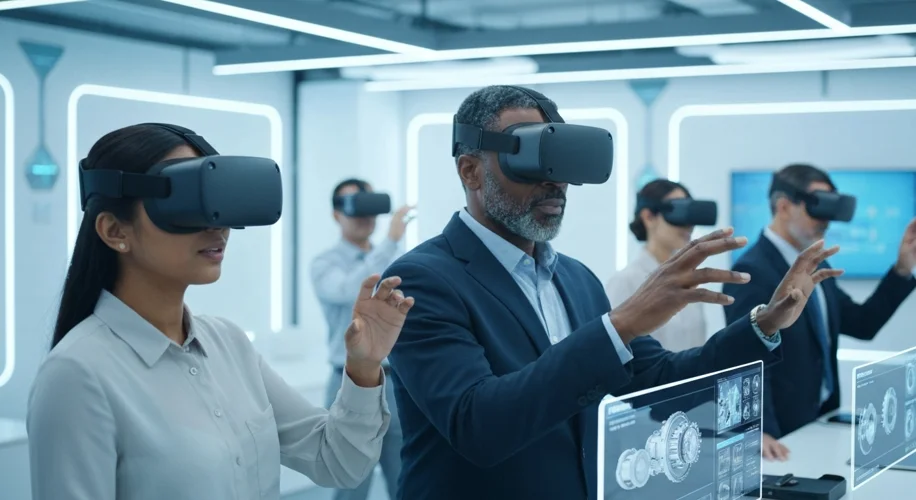Okay, so hear me out… Virtual Reality isn’t just for gaming anymore. It’s seriously making waves in the business world, especially for training. I’ve been digging into how companies are using VR for Learning & Development (L&D) and safety training, and it’s pretty wild how effective it can be.
Remember the old days of boring training videos or dry manuals? Yeah, those are becoming a thing of the past. VR offers a way more immersive and hands-on experience. Think about onboarding new employees. Instead of just reading about company procedures, new hires can actually walk through a virtual office, meet digital avatars of their colleagues, and even practice tasks in a safe, simulated environment. This kind of active learning sticks way better than just passively listening.
One of the biggest areas where VR is shining is safety training. Imagine training factory workers on how to operate heavy machinery or emergency responders practicing complex disaster scenarios. With VR, they can make mistakes, learn from them, and refine their skills without any real-world risk. You can simulate dangerous situations – like fires, chemical spills, or electrical hazards – and train people on the exact protocols to follow. This hands-on practice builds muscle memory and confidence, which is crucial when lives are on the line.
For L&D, the possibilities are huge. Companies are using VR for soft skills training, like customer service simulations where employees can practice handling difficult customers in a realistic setting. They can also use it for leadership training, allowing managers to practice giving feedback or navigating challenging team dynamics. The ability to repeat scenarios and get immediate feedback is a massive advantage.
Now, you might be thinking, “This sounds expensive!” And yeah, VR gear and software can be an investment. But here’s the catch: it can actually be more cost-effective in the long run. Think about the costs associated with traditional training: travel, venue rentals, materials, and the time employees spend away from their actual jobs. VR can significantly cut down on these expenses. Plus, the increased effectiveness of the training means fewer errors, less downtime, and better overall performance, leading to a solid return on investment.
If you’re looking into implementing VR for your business, there are some key things to consider. First, define your training goals clearly. What specific skills or knowledge do you want to impart? Then, research the available VR platforms and content. Some companies develop custom VR training modules, while others offer off-the-shelf solutions. Getting a pilot program going with a small group can help you test the waters and gather feedback before a full rollout.
It’s all about creating engaging, memorable learning experiences that translate directly into better job performance. VR is definitely more than just a gimmick; it’s a powerful tool that’s reshaping how we learn and work. It’s exciting to see how companies are embracing this tech to build better-trained, safer, and more effective teams. What are your thoughts on VR in the workplace? Let me know!

